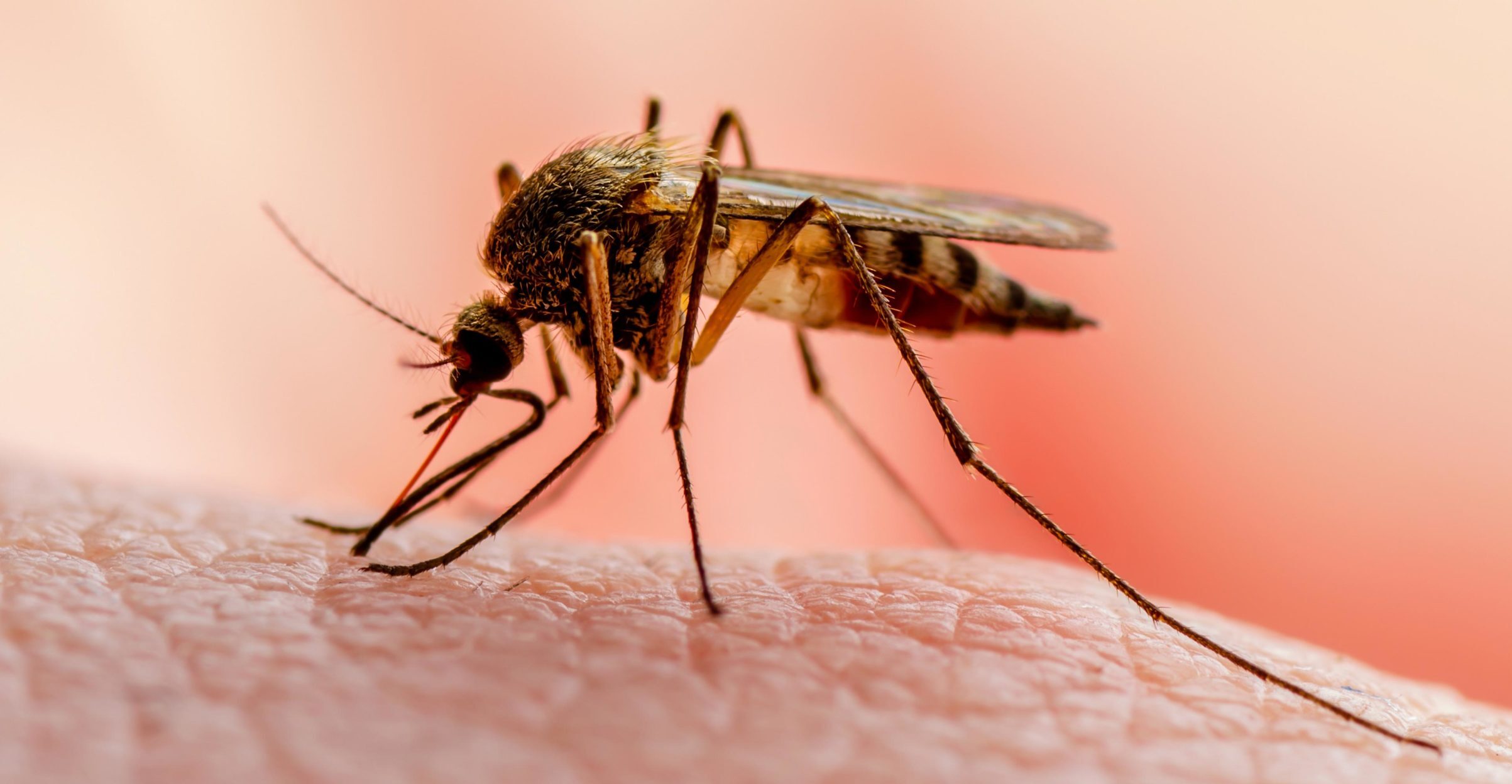What Is The Role Of Antimalarial Drugs In Malaria Treatment?

Malaria is a significant global health issue, causing substantial morbidity and mortality, particularly in sub-Saharan Africa. Antimalarial drugs play a crucial role in the treatment of malaria, aiding in the control and prevention of this infectious disease.
This article aims to provide a comprehensive overview of the role of antimalarial drugs in malaria treatment. The discussion will encompass the understanding of malaria, the various types of antimalarial drugs available, their mechanisms of action, and the relevance of treatment guidelines in selecting appropriate drugs.
Additionally, this article will address the safety considerations and side effects associated with antimalarial drugs, emphasizing the importance of proper dosage and adherence. Furthermore, the article will explore the ongoing research efforts aimed at combating drug resistance and the potential future prospects of new antimalarial drugs in development.
By examining these aspects, this article seeks to enhance understanding of the vital role that antimalarial drugs play in the treatment and control of malaria.
Key Takeaways
- Selecting the right antimalarial drug depends on type, severity, and location of malaria.
- Adhering to treatment guidelines and completing the full course of antimalarial therapy is crucial for effectiveness.
- Antimalarial drugs can have side effects that require proper management, such as gastrointestinal symptoms, skin rashes, and neurological effects.
- Ongoing research and development of new antimalarial drugs are essential to combat drug resistance and improve treatment efficacy.
Understanding Malaria: Causes, Symptoms, and Impact
Malaria, a life-threatening disease caused by the Plasmodium parasite, is characterized by symptoms such as fever, chills, and flu-like symptoms. It can have a significant impact on individuals and communities.
The main cause of malaria is the bite of infected female Anopheles mosquitoes, which transmit the parasite into the bloodstream. These parasites then invade and multiply within red blood cells, leading to the release of toxins and the destruction of the cells.
Globally, malaria is a major public health issue, particularly in tropical and subtropical regions. It disproportionately affects low-income countries, where access to healthcare and preventive measures is limited.
Malaria can cause severe illness and death, especially in vulnerable populations such as children under five years old and pregnant women.
Efforts to control malaria include the use of insecticide-treated bed nets, indoor residual spraying, and antimalarial drugs, which play a crucial role in the treatment and prevention of malaria.
Types of Antimalarial Drugs: A Comprehensive Overview
This paragraph will discuss the different types of antimalarial drugs.
- Chloroquine and Hydroxychloroquine are commonly used antimalarials that work by interfering with the parasite’s ability to digest hemoglobin.
- Artemisinin-based Combination Therapies are recommended for the treatment of uncomplicated malaria and are highly effective in reducing the parasite load.
- Quinine and Quinidine are older antimalarials that are still used today in certain cases, although their use is limited due to the availability of more effective alternatives.
- Mefloquine and Atovaquone-Proguanil are other options for the prevention and treatment of malaria, with each having its own advantages and limitations.
Chloroquine and Hydroxychloroquine
Chloroquine and hydroxychloroquine are widely used antimalarial drugs with proven efficacy in treating malaria. These drugs have also gained attention for their potential role in treating COVID-19.
- Chloroquine and hydroxychloroquine have been studied for their potential antiviral properties against COVID-19. Several in vitro studies have shown promising results, inhibiting the replication of the virus. However, clinical trials are still ongoing to determine their effectiveness in treating COVID-19 in humans.
- Compared to other antimalarial drugs, chloroquine and hydroxychloroquine have a long history of use and a well-established safety profile. They are also affordable and widely available, making them accessible in resource-limited settings.
- However, it is important to note that chloroquine and hydroxychloroquine are not without side effects. They can cause adverse reactions such as gastrointestinal disturbances, skin rashes, and retinopathy with prolonged use. Proper monitoring and dosage adjustments are crucial to ensure their safe and effective use in malaria treatment and potential COVID-19 treatment.
Artemisinin-based Combination Therapies
Artemisinin-based combination therapies (ACTs) have emerged as the preferred treatment for uncomplicated falciparum malaria due to their high efficacy and the emergence of drug resistance to other antimalarials.
The use of ACTs, which combine an artemisinin derivative with a partner drug, has significantly contributed to reducing the global burden of malaria. The artemisinin component acts rapidly, reducing the parasite load, while the partner drug eliminates the remaining parasites and prevents the development of resistance.
This combination approach has proven to be highly effective in treating malaria, with cure rates exceeding 95% in most settings. Efficacy studies have demonstrated the superiority of ACTs over monotherapies, highlighting their role in preventing the development of drug resistance.
The regular monitoring of drug efficacy is crucial to ensure the continued effectiveness of ACTs in combating malaria and controlling the spread of antimalarial resistance.
Quinine and Quinidine
Quinine and quinidine are alkaloids derived from the bark of the cinchona tree, and their historical significance in the management of malaria lies in their ability to effectively control parasite growth by interfering with the heme detoxification process.
Quinine, the most well-known of the two, has been used for centuries as a treatment for malaria. It is characterized by its bitter taste and has been used to create the popular tonic water. Quinine can have various side effects, including cinchonism, which manifests as tinnitus, headache, and nausea.
On the other hand, quinidine, a diastereomer of quinine, has a similar mechanism of action but is primarily used as an antiarrhythmic medication. It blocks sodium channels in cardiac cells, prolonging the action potential duration and refractory period.
Both quinine and quinidine have played a significant role in malaria treatment throughout history.
Mefloquine and Atovaquone-Proguanil
Mefloquine and atovaquone-proguanil are two other medications commonly used in the management of malaria.
Mefloquine is a long-acting antimalarial drug that is effective against both chloroquine-resistant and multidrug-resistant strains. It works by interfering with the parasite’s ability to metabolize and replicate within the red blood cells. However, there have been concerns regarding the safety of mefloquine, as it has been associated with neuropsychiatric side effects in some individuals.
On the other hand, atovaquone-proguanil is a combination therapy that acts by inhibiting the mitochondrial electron transport chain and folate synthesis in the parasite. It has shown good effectiveness against both P. falciparum and P. vivax strains. Although side effects such as gastrointestinal disturbances and skin rashes have been reported, atovaquone-proguanil is generally well-tolerated.
Overall, both mefloquine and atovaquone-proguanil play important roles in the treatment of malaria, but careful consideration of their safety profiles is necessary when prescribing these medications.
Mechanisms of Action: How Antimalarial Drugs Work
Antimalarial drugs play a crucial role in malaria treatment by targeting specific mechanisms of the malaria parasite’s life cycle, effectively disrupting its ability to replicate and survive in the human body. Understanding the mechanisms of action of these drugs is essential for developing effective treatment strategies.
- Inhibition of folate synthesis: Antimalarial drugs like sulfadoxine-pyrimethamine and proguanil inhibit the synthesis of folate, a vital nutrient for the parasite’s survival. This disrupts the production of DNA and RNA, eventually leading to the parasite’s death.
- Inhibition of heme detoxification: Artemisinin-based drugs, such as artemether and artesunate, target the parasite’s ability to detoxify heme, a toxic byproduct of its digestion of hemoglobin. Accumulation of heme leads to oxidative stress and the parasite’s demise.
- Disruption of mitochondrial function: Atovaquone, a component of atovaquone-proguanil, inhibits the parasite’s mitochondrial electron transport chain, causing a loss of energy production and ultimately killing the parasite.
- Interference with protein synthesis: Drugs like chloroquine and mefloquine interfere with the parasite’s ability to synthesize proteins, essential for its growth and survival.
Understanding these mechanisms is crucial as the emergence of drug resistance remains a significant challenge. Research into alternative treatment options and combination therapies is necessary to combat resistance and ensure effective malaria treatment.
Treatment Guidelines: Choosing the Right Antimalarial Drug
In the previous subtopic, we discussed the mechanisms of action of antimalarial drugs, exploring how they work to combat the malaria parasite. Now, let’s shift our focus to the treatment guidelines for malaria and the process of choosing the appropriate antimalarial drug.
While there are various antimalarial drugs available, selecting the right one depends on several factors such as the type of malaria, the severity of the infection, and the geographical location of the patient. It is essential to consider alternative treatments as well, especially in cases where resistance to certain drugs has emerged.
Additionally, drug interactions need to be taken into account, as some antimalarial drugs may interact with other medications, potentially affecting their efficacy or causing harmful side effects. By adhering to treatment guidelines and considering these factors, healthcare professionals can optimize the effectiveness of antimalarial drug therapy.
Side Effects and Safety Considerations
Adverse effects and safety concerns should be carefully considered when administering antimalarial therapy. While antimalarial drugs are crucial in the treatment of malaria, they are not without their side effects. Proper management of these side effects is essential to ensure the safety and well-being of the patient.
Side effects management:
- Gastrointestinal symptoms like nausea, vomiting, and diarrhea are common side effects of antimalarial drugs. Antiemetic and antidiarrheal medications can be used to alleviate these symptoms.
- Some antimalarial drugs may cause skin rashes, which can be managed by using topical corticosteroids or antihistamines.
- Neurological side effects such as dizziness, headache, and confusion can occur. Close monitoring and dose adjustments may be necessary in such cases.
Drug interactions:
- Antimalarial drugs can interact with other medications, leading to potential adverse effects or reduced efficacy. Healthcare providers should be cautious when prescribing antimalarials to patients taking other medications, especially those metabolized by the same liver enzymes.
By carefully managing side effects and considering potential drug interactions, healthcare professionals can optimize the safety and effectiveness of antimalarial therapy.
Importance of Proper Dosage and Adherence
Proper dosage and adherence play a crucial role in ensuring the effectiveness and success of malaria therapy. Patient education about the importance of adhering to the prescribed dosage is essential in preventing treatment failure and the development of drug resistance.
It is imperative for healthcare providers to educate patients on the correct dosing schedule, potential side effects, and the importance of completing the full course of treatment. Non-adherence to antimalarial drugs can have a significant impact on treatment outcomes, as incomplete or irregular dosing may result in subtherapeutic drug levels and inadequate parasite clearance.
Furthermore, it can lead to the emergence of drug-resistant strains of the malaria parasite, posing a serious public health concern. Therefore, patient education and strict adherence to the prescribed dosage are vital in preventing treatment failure and ensuring the long-term effectiveness of antimalarial drugs.
Combating Drug Resistance: The Role of Antimalarial Drug Research
Combating the emergence of drug resistance in malaria therapy requires ongoing research and development of novel therapeutic approaches. Antimalarial drug research plays a crucial role in addressing this challenge. Here are some key points to consider:
- Identification of drug-resistant strains: Research helps in identifying and monitoring the emergence of drug-resistant malaria parasites, enabling the development of appropriate interventions.
- Development of new drugs: Efforts are directed towards discovering and developing new antimalarial drugs with different mechanisms of action. This allows for a diversified treatment approach and helps overcome resistance.
- Optimizing drug combinations: Studying drug interactions and combining different antimalarial drugs can enhance treatment effectiveness and delay the onset of resistance.
- Understanding resistance mechanisms: Research helps in unraveling the molecular mechanisms behind drug resistance, aiding in the design of targeted therapies and diagnostic tools.
Continuous antimalarial drug research is essential to combat drug resistance and ensure effective malaria treatment strategies.
Future Prospects: New Antimalarial Drugs in Development
Drug resistance is a major challenge in the fight against malaria, necessitating the continuous development of new antimalarial drugs. The current subtopic focuses on the future prospects of combating drug resistance through the development of new antimalarial drugs.
Promisingly, there are several new drug candidates in the pipeline that show potential for addressing drug resistance and improving treatment outcomes. These candidates undergo rigorous preclinical testing to ensure safety and efficacy before progressing to clinical trials.
Clinical trials play a crucial role in evaluating the effectiveness of these new drugs in human subjects. These trials assess the drug’s pharmacokinetics, safety, and tolerability, providing valuable data for regulatory approval and subsequent deployment in malaria-endemic regions.
Through ongoing research and development efforts, new antimalarial drugs hold promise in ensuring effective treatment and control of malaria, ultimately contributing to the global efforts to eliminate this devastating disease.
Frequently Asked Questions
Are antimalarial drugs effective in preventing the transmission of malaria?
Antimalarial drugs play a crucial role in preventing the transmission of malaria by reducing the parasite load in infected individuals. However, the effectiveness of these drugs can be hindered by antimalarial drug resistance, emphasizing the importance of combination therapy to combat this issue.
Can antimalarial drugs be used to treat other diseases besides malaria?
Antimalarial drugs are primarily used to treat malaria, but research progress is being made to explore their potential in treating other diseases. Antimalarial drug resistance is a significant concern in malaria control efforts.
What are the potential long-term side effects of taking antimalarial drugs?
The potential complications of taking antimalarial drugs include long-term health risks. These can include drug resistance, organ damage, neurologic effects, and adverse reactions. Further research is needed to fully understand these side effects.
Are there any natural alternatives to antimalarial drugs that can be used for treatment?
Natural alternatives and herbal remedies can be used as treatment for malaria. These alternatives may include traditional medicines, plant extracts, and dietary supplements, but their effectiveness and safety need to be thoroughly evaluated through scientific research.
How do antimalarial drugs affect pregnant women and their unborn babies?
Antimalarial drugs should be used cautiously in pregnant women due to potential risks to both the mother and the unborn baby. Safety considerations and effectiveness in preventing malaria in pregnant women should be carefully evaluated.








